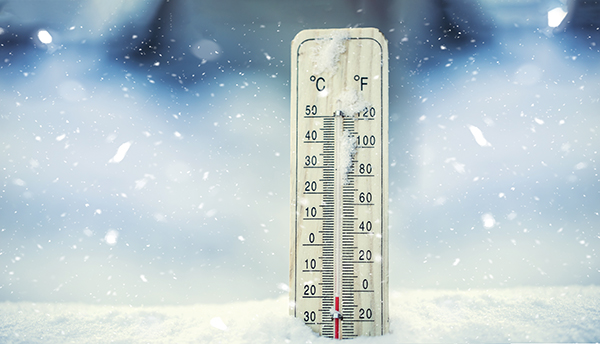
The Great Outdoors
May 23, 2023 | By Curtis Bennett
Breaking down the concepts behind outdoor reset.

(Adobe Stock)
I hope you know where this article’s title comes from (‘The Great Outdoors’), and if not, stop reading and go watch this classic late 80s John Candy, Dan Aykroyd movie now …
Ok, now that you are back, let’s continue. Our whole world is built on algorithms, a term that has become very popular lately. Google, Facebook, TikTok, whatever poison you choose, people think these companies “invented” algorithms. Well, I’m here to tell you they did not. Algorithms have been around as long as computers, and basically, the term algorithm means “a process or set of rules that are calculated to solve or perform a specific task.”
I enjoy designing device controls. To me, solving problems, and even watching things fizzle when you do it wrong, is actually fun. It’s all learning.
The very first two algorithms I learned related to hydronics and heating buildings were P.I.D. and outdoor reset. Today, let’s tackle the one with the least amount of math.
To fully understand outdoor reset we must start by breaking apart the terms. Let’s begin with the second term first.
Reset is a commonly used term in control theory, which by definition is an “algorithm that takes an input, or inputs, to set the output back to zero.”
Why would we return the output to zero? Stay with me.
Let’s not look at the definition literally. What the reset algorithm is trying to achieve is a “zero” outcome. For instance, if we had a value of 1,000 going into the “input” of the algorithm, the algorithm itself would compute that it needs to output -1,000 to “zero” out the outcome.
Essentially, for a 1000 input we need to output negative 1000 to “reset” the control.
Now, the first term, “outdoor” seems simple right. Well, it is. Outdoor reset controls will calculate an output value based on the outdoor temperature as the input.
Now remember, a reset control tries to bring the output to “zero”. In this case we have two criteria. We have the heat loss of the building we’re trying to heat, and we have the outdoor air temperature.
Without getting into the calculations, we do know the outdoor air temperature does have a direct effect on the heat loss of a building.
Since we know the outdoor temperature has a direct correlation on the heat loss of a building, that means as the outdoor temperature goes down, we need more heat in the building to keep the occupants comfortable.
At this point I am really hoping a few light bulbs just went off!
In control theory, if one value has a direct correlation on another value (meaning the output of the control is directly “hinged” to the input value) we can easily calculate the output.
Now, this creates a slope, or a sliding scale, for the output. So, the colder it gets outside the more we need to turn up the heat source (i.e., the boiler).
The way we turn up a boiler is to give it a new target to meet. You guessed it! That is what the outdoor reset control does. To compensate for a building’s heat loss, we set the boiler target accordingly. This will add more heat to the building to get a net zero, or reset, effect.
We try to add as much heat to the building as it is currently losing, and this can be calculated fairly accurately.
There are a couple parameters you need to input into the algorithm to come up with the slope, or compensation value, for the boiler target.
First is the minimum target for the boiler. Next is the maximum target for the boiler. The last two parameters are the lowest outdoor air temperature and the warm weather shut down. I will explain these last two.
The lowest outdoor air temperature is the value at which you will hit the maximum temperature of your boiler. These values can be found in many places, but for where I live it’s 10F (-12C), the technical term is outdoor design temperature.
So, at 10F (-12C) the boiler target temperature will be at its highest, because at that temperature the heat loss of the building is at its highest.
The other value, warm weather shut down (WWSD), is the temperature at which we don’t need heat in the building anymore.
This number “could” be hardcoded in, but I like to give the control more flexibility for the user.
This slope, or compensation value, is normally called the Heating Curve (see graph below). I’m sure there would be some debate on whether this line could be “curved” or if straight works best. I’m not going to enter that debate here.
Let’s start by putting some numbers into the algorithm to see the outcome. For our calculation, the hottest temperature we would need from the boiler is 180F (82C), technically called Design Boiler Temp. And remember, we will hit this at our Design Outdoor Temp, which we will set at 10F (-12C).
Our lowest boiler temperature is 90F (32C), or Minimum Boiler Temp, and we will hit this temperature as we approach our WWSD number, which we will set at 70F (21C).

Ok, if you look at the graph you can see that our calculated target for the boiler when the outdoor temperature is 50F (10C) would be 120F (49C).
Remember, the way outdoor reset works is the colder it gets outside the higher the target gets for the boiler. If I had more time, we could get into the actual calculation of how we come up with these numbers, but we don’t. So you will just have to trust me. Plus, you can see it on the graph, and graphs don’t lie!
Keep in mind that an outdoor reset calculation can be used on the mixed water side as well.
It’s just a calculation, and there are a couple other reasons we do this calculation. Don’t get me wrong, matching the heat loss is priority one, but if we talk about condensing boilers, the boiler is much more efficient when it’s condensing. So, the lower we can keep the target for the boiler on a given day the more efficient the system will be.
If we can run the building at 104F (40C) and match the heat loss, then the boiler is condensing, running at its highest efficiency.
Condensing boilers also are more efficient because they modulate, but that’s not today’s discussion.
Secondarily, when we match the heat loss of the building to the amount of Btu/h the boiler is putting out we get much longer run times on our equipment, and this helps the longevity of the equipment in the boiler room.
I realize these last couple of points were short, but to be fair, they are fairly self-explanatory. I thought it was best to spend the time on the calculation.
Plus, for me, the calculation is the funnest part. Yes, I just used the non-word funnest!
Until next time, keep calculating. <>

 Curtis Bennett C.E.T is product development manager with HBX Control Systems Inc. in Calgary. He formed HBX Control Systems with Tom Hermann in 2002. Its control systems are designed, engineered and manufactured in Canada to accommodate a range of hydronic heating and cooling needs.
Curtis Bennett C.E.T is product development manager with HBX Control Systems Inc. in Calgary. He formed HBX Control Systems with Tom Hermann in 2002. Its control systems are designed, engineered and manufactured in Canada to accommodate a range of hydronic heating and cooling needs.


